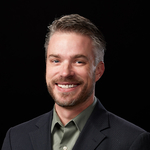National Academies release report on high energy density science with LLNL contributions
The National Academies of Sciences, Engineering, and Medicine released a report, Fundamental Research in High Energy Density Science, which identifies key challenges and science questions for the field of High Energy Density (HED) science for the coming decade and proposes ways to address them.
The report follows a year-and-a-half-long consensus study by a committee of 13 experts with a breadth of experience in HED science and related fields. The committee was chaired by Raymond Jeanloz of the University of California, Berkeley and Giulia Galli of the University of Chicago, and included contributions by Félicie Albert, deputy director for the Lawrence Livermore National Laboratory (LLNL) High Energy Density Science Center and a scientist in the National Ignition Facility and Photon Science Directorate (NIF&PS).
HED science is a wide-ranging and rapidly evolving research frontier seeking to understand and control material at extreme conditions.
“Over the past decade, HED science has had many societal and scientific impacts,” Albert said. “It has critical applications in areas ranging from inertial confinement fusion, to the science of materials that are important for sustaining the nation's nuclear deterrent, as well as understanding planets and how they formed and evolved.”
In their comprehensive study, the committee articulated advancements in HED physics in the United States over the last decade and identified major scientific gaps and potential new directions in areas of modeling, simulation, instrumentation and target fabrication that offer the most promising investment opportunities. They also identified challenges the field may face over the next decade and offered guidance for needed investments, interagency collaboration tools and infrastructure. Additionally, the committee evaluated the role of HED physics in developing an expert workforce for National Nuclear Security Administration (NNSA) and assessed required resources, scientific focus, access to experimental facilities and funding levels to meet nuclear security workforce needs in the coming decade. Finally, they assessed the advances made by other countries in HED science and discussed the relative standing of the United States.
The report outlined two leading recommendations to strengthen global leadership in HED science by making essential investments in capabilities and workforce. The recommendations have important implications for LLNL programs, facilities and workforce, said Vincent Tang, principal deputy director for the NIF&PS Directorate at LLNL.
“The recommendations from the National Academies report are important and well-aligned with LLNL plans, including National Ignition Facility (NIF) sustainment and planned upgrades to enhance fusion yield outputs that will build on recent inertial confinement fusion (ICF) and HED successes in partnership with the community,” Tang said. “Foundationally, we can only accomplish our national security mission through sustained investment in our workforce and a diverse and inclusive environment that strives toward science and technology excellence.”
In its first recommendation, the committee called on the NNSA to exploit and enhance the HED science capabilities and facilities. The committee outlined the need to establish plans over the next five years to extend, upgrade or replace NNSA’s flagship HED facilities (e.g., National Ignition Facility, Z Pulsed Power Facility at Sandia, and Omega Laser Facility at the Laboratory for Laser Energetics). The recommendation included increasing the promotion of forefront technology development, including in high-intensity lasers; enhancing academic capabilities and mid-scale facilities; and broadening remote access to NNSA’s major experimental and computing facilities.
The committee’s second leading recommendation is to make a robust investment in the HED science workforce by enhancing career pathways, broadening current diversity, equity and inclusion programs and improving workplace climate.
"The bottom line is that we need to enhance human capacity for HED science research,” Albert said. “Otherwise, we're at risk of not fulfilling the full potential of this scientific field. Now more than ever, we need a strong pipeline of talented scientists, engineers and technicians in this field — a healthy workforce is really essential.”
NNSA already has some great academic programs, Albert added, of which the committee urged continued development to allow more opportunities for students and professors at academic institutions — through internships, postdoc opportunities and visits — to interact with national labs and be embedded in its research.
“We also emphasized how important it is that we collaborate with international partners and find ways to attract and retain international scholars because they really are a huge part of a global workforce,” Albert said.
“I had the pleasure of being brought in as an international postdoc into a national security lab. I can attest that the fundamental science, unique resources and capabilities at the national labs have been really key to attracting people, like myself, into the U.S. HED science community. We should continue efforts in that direction to maintain collaboration with international scientists.”
The report also identified four HED science grand challenges for the next decade:
- How can nuclear fusion be controlled and harnessed for society’s energy, security and technology needs?
- What are the quantum states of matter in the HED regime leading to new classes of materials for energy transport, storage and quantum information science?
- How can we understand matter and processes at extreme HED conditions over a vast range of distances, times: atomic to cosmic?
- Can extreme astrophysical phenomena evident from observations or predicted by theory be reproduced in the laboratory?
The next decade of HED science, the report notes, will be instrumental to growing our understanding and in the development of new technologies and processes.
The final report will be used by policy makers, industry, non-governmental organizations, the public and the scientific community in advancing the field of HED science over the next decade.
For a full copy of the report, visit the National Academies website.
Contact
 Paul Rhien
Paul Rhien
[email protected]
(925) 422-4206
Related Links
National Academies of Sciences, Engineering, and MedicineFundamental Research in High Energy Density Science
Félicie Albert
Tags
High-Energy-Density ScienceLasers and Optical S&T
Global Security
National Ignition Facility and Photon Science
Physical and Life Sciences
Center for High Energy Density Science
Lasers
Science
Featured Articles








